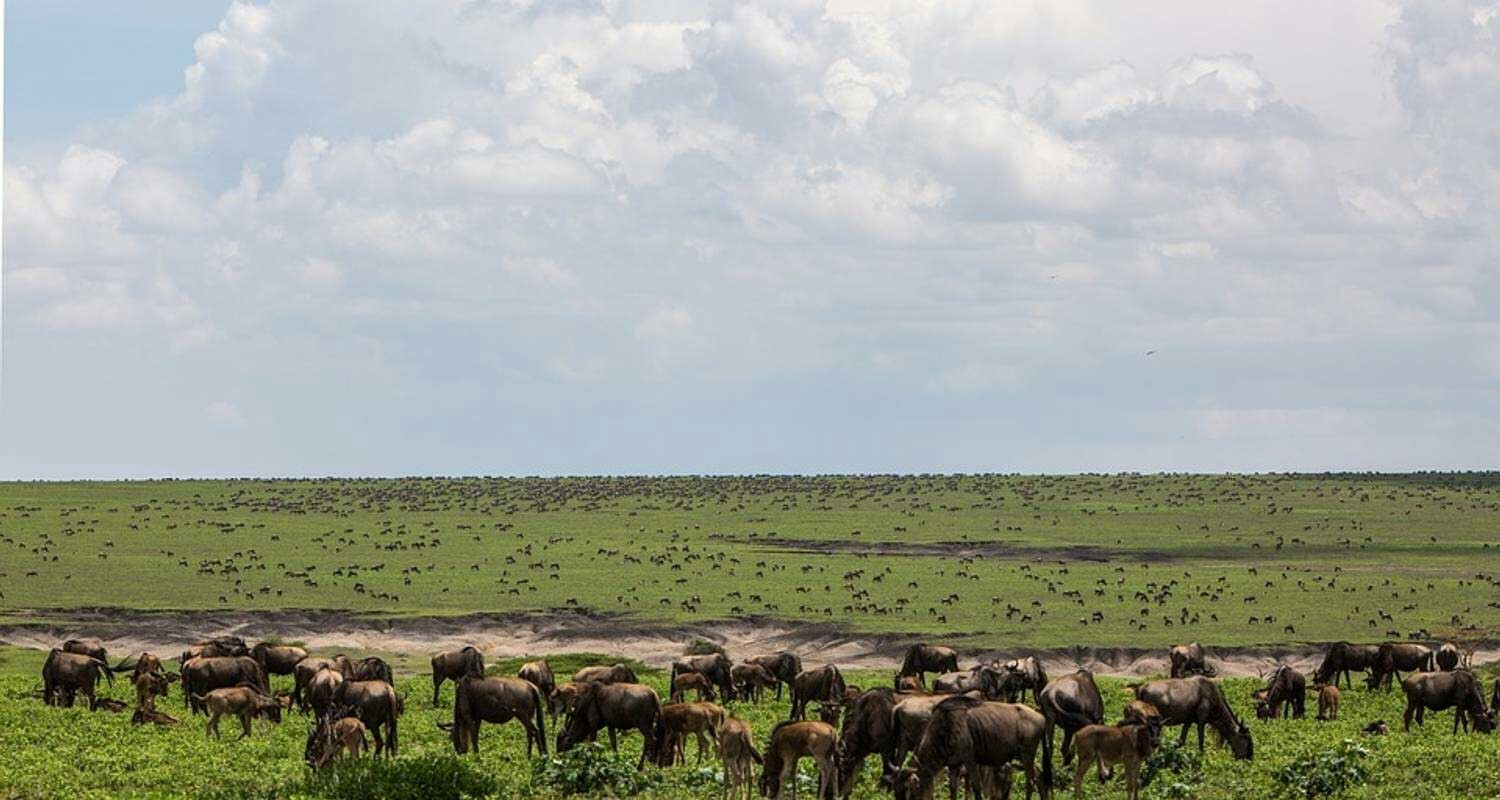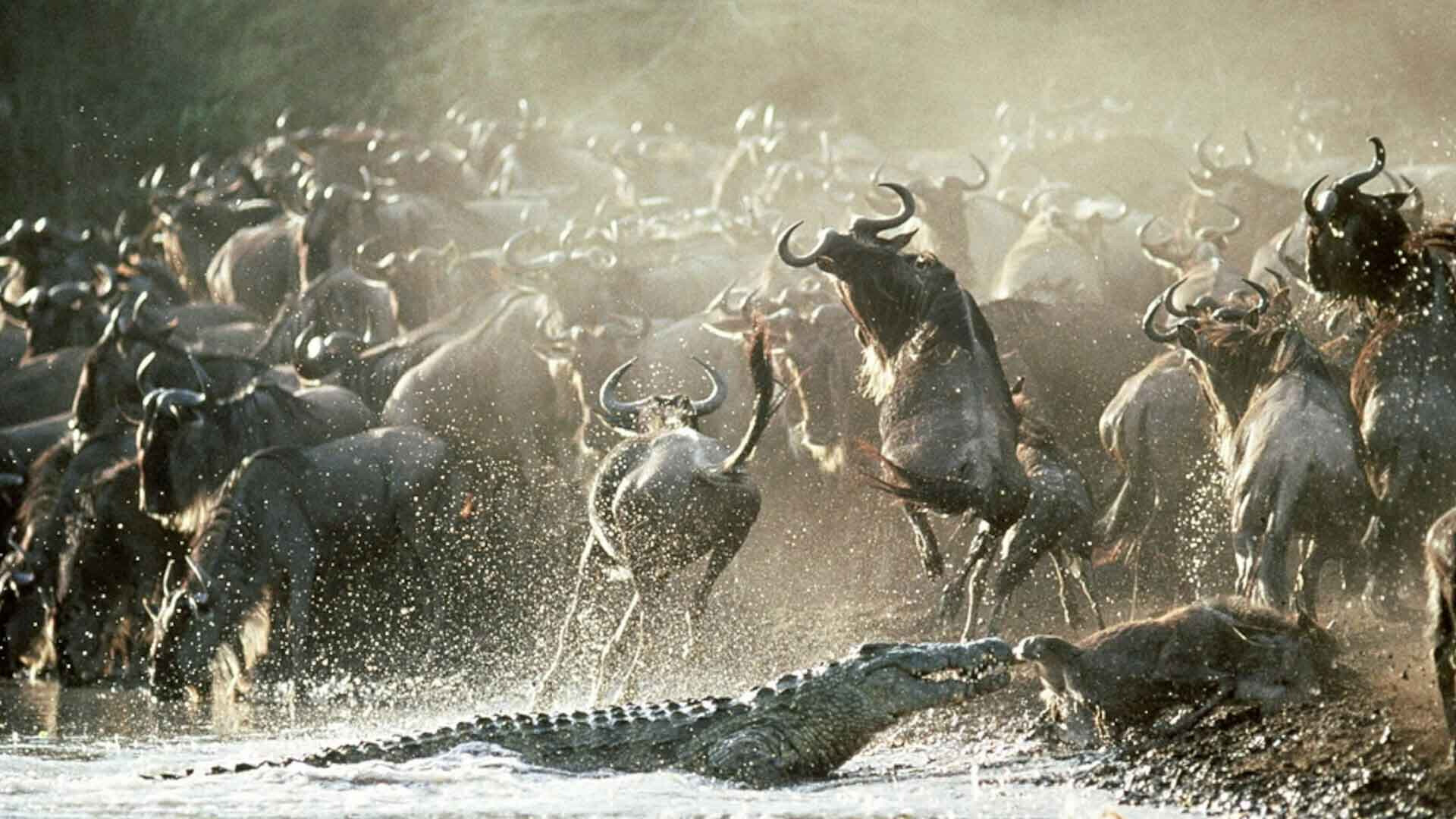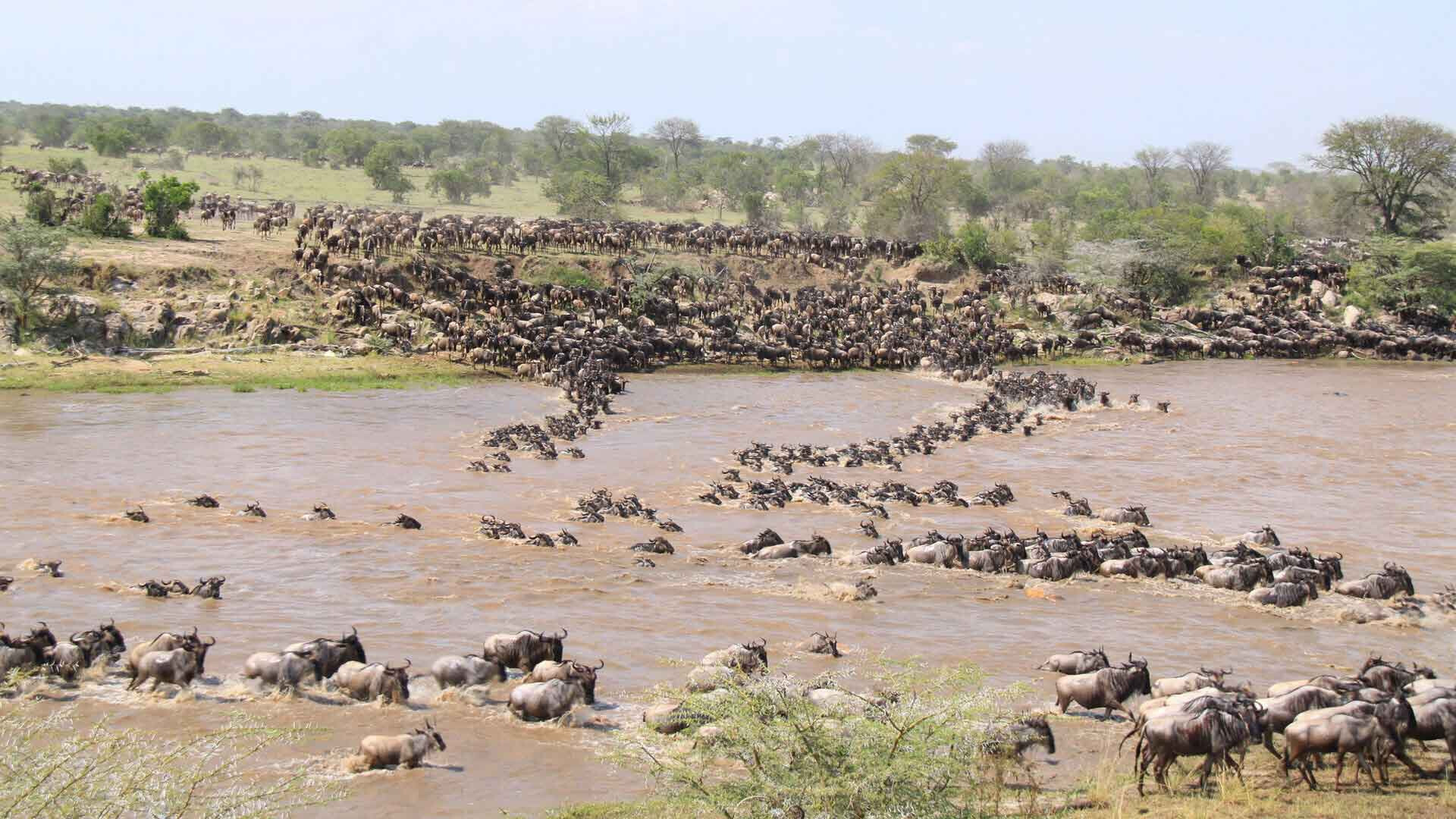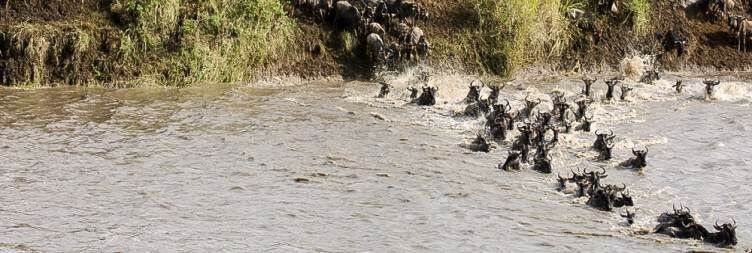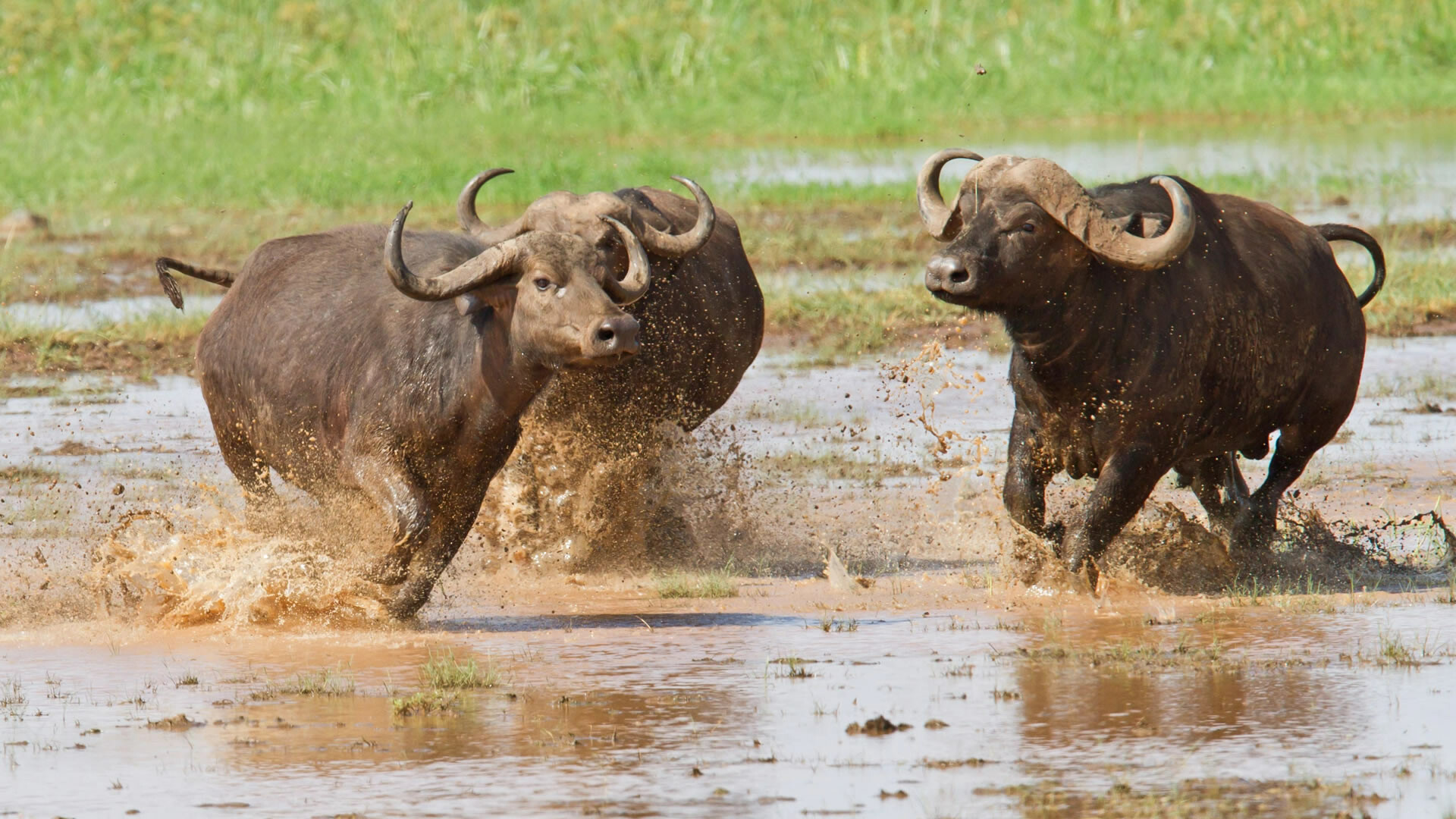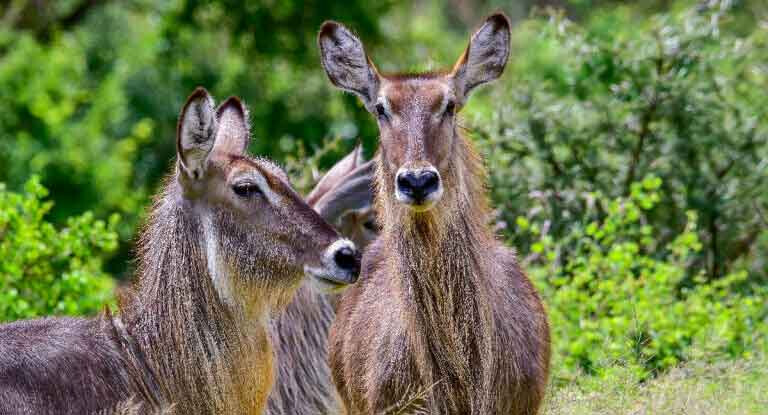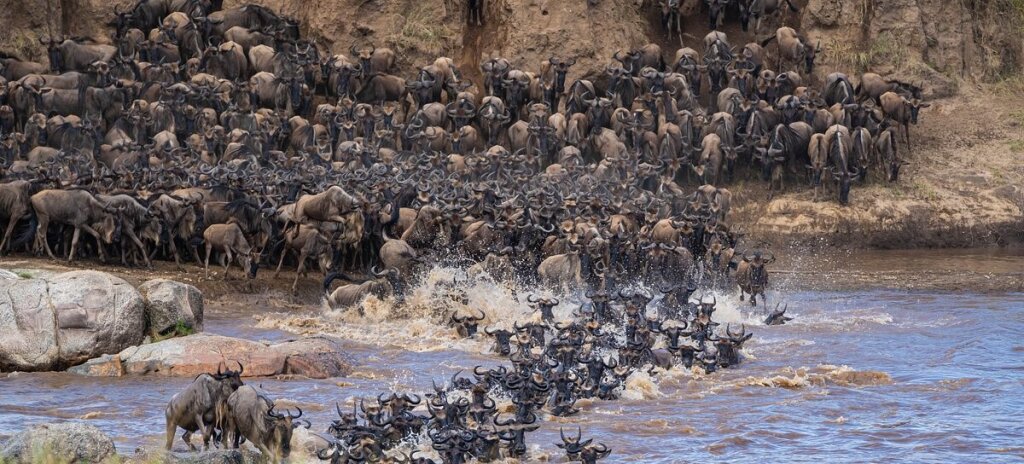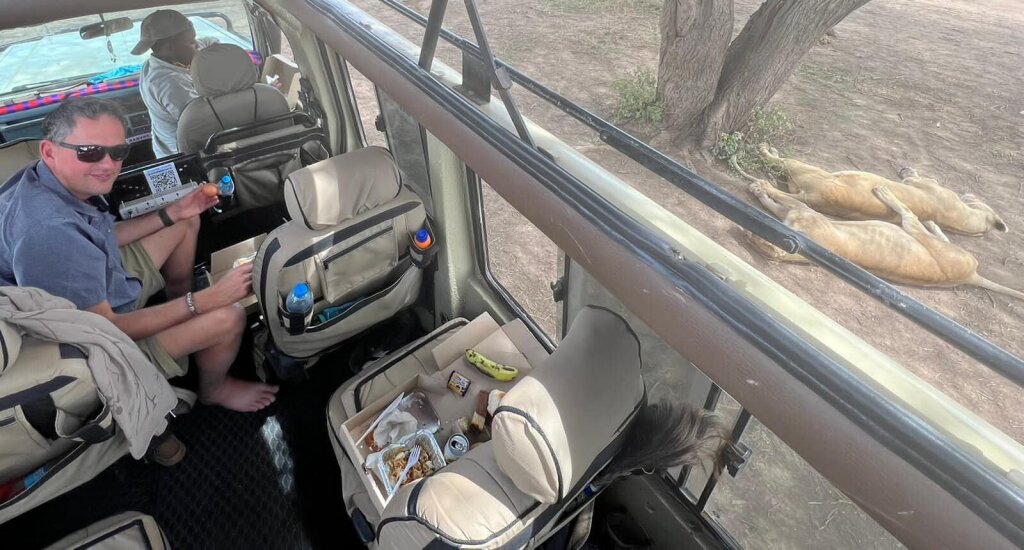Serengeti Wildebeest Migration Routes & Dates
Why The Serengeti Wildebeest Migration is a Spectacle
When it comes to natural wonders, few events rival the awe-inspiring spectacle of the Serengeti Wildebeest Migration. Picture this: millions of wildebeests thundering across the vast plains of East Africa, accompanied by zebras, gazelles, and predators in a dramatic display of nature's raw power and beauty.
In this article, we'll explain the intricacies of this migration phenomenon, exploring its routes, timing, and how you can experience it firsthand.
Understanding the Serengeti Wildebeest Migration
What is the Serengeti Wildebeest Migration?
The Serengeti wildebeest migration is one of the most spectacular natural events on Earth. It is a circular journey of over 1.5 million wildebeest, accompanied by zebra, gazelle, and other animals, across the Serengeti National Park in Tanzania and the Maasai Mara National Reserve in Kenya. The migration is driven by the search for fresh grazing and water, and it takes place throughout the year.
Read About The Great Wildebeest Migration an Ultimate Guide 2024
We will also tell you everything you need to know about planning your own wildebeest migration safari, including the best time to go, where to see the migration, and how to choose the right safari itinerary.
Why Do Wildebeests Migrate?
Wildebeests migrate in search of food and water, following the seasonal rains and the growth of fresh grass. This instinctual journey ensures their survival and is a testament to the adaptability of nature's creatures.
When Does The Wildebeest Migration Happen?
The Serengeti wildebeest migration is an annual event that takes place from July to October. The migration is triggered by the rains, as the wildebeest follow the green grass in search of food.
The Serengeti wildebeest migration is one of the most popular tourist attractions in Tanzania. Every year, over 1.5 million wildebeest, along with zebra and gazelle, embark on a circular journey across the Serengeti National Park and the Maasai Mara National Reserve in Kenya. The migration is a truly awe-inspiring sight, and it's an experience that every wildlife lover should have at least once in their lifetime.
Routes of The Serengeti Wildebeest Migration
The Serengeti Wildebeest Migration Patterns
The Northern Route
The migration typically begins in the Southern Serengeti around January and February, with the herds moving northward towards the Maasai Mara in Kenya. This route takes them across the Grumeti River, where dramatic river crossings occur, providing a thrilling spectacle for onlookers.
The Western Route
After traversing the northern plains, the herds often veer westward, following the Grumeti River and its lush surroundings. This route showcases the resilience of the wildebeests as they navigate varied terrain and encounter potential obstacles such as predators and river currents.
The Southern Route
As the dry season approaches, the herds embark on their return journey southward, crossing the Serengeti's expansive plains once more. This route allows them to replenish their energy reserves before the cycle begins anew.
Serengeti Wildebeest Migration Timing and Dates
When Does the Migration Occur?
The Serengeti Wildebeest Migration is a year-round phenomenon, with the timing of the migration influenced by seasonal changes and rainfall patterns. However, the peak migration period typically occurs between June and August, coinciding with the dry season in East Africa.
Key Dates to Witness the Migration
For those planning a trip to witness the migration, it's essential to consider the timing carefully. June and July are prime months to witness the river crossings in the Northern Serengeti and Maasai Mara, while August brings opportunities to see the herds spread out across the plains.
Where Does The Wildebeest Migration Start & End?
The Serengeti Wildebeest Migration Patterns
The wildebeest migration in the Serengeti follows a circular pattern, moving clockwise through different regions of the Serengeti ecosystem in search of fresh grazing and water. Here's a general overview of the cycle:
| Month | Details |
|---|---|
| January-March | Calving season in the southern Serengeti, where the wildebeest congregate to give birth to their young. |
| April-May: | The herds move westward towards the Western Corridor, following the rains and seeking out greener pastures. |
| June-July: | The wildebeest cross the Grumeti River, facing the challenge of predators like crocodiles. |
| August-September: | The migration continues northwards, often spreading out across a broad front. |
| October-November: | The herds reach the northern Serengeti and the Masai Mara in Kenya, where they graze on the lush grasslands. |
| December: | The wildebeest begin to move southwards again, completing the cycle. |
Key factors influencing the Serengeti wildebeest migration pattern:
Rainfall: The wildebeest follow the rains to find fresh grazing and water.
Predation: The herds move in large numbers to reduce the risk of predation.
Nutritional needs: Different parts of the Serengeti ecosystem offer different types of grasses and nutrients that the wildebeest need at different times of the year.
The Best Place To See The Wildebeest Migration
Serengeti Wildebeest Migration Map
The best place to see the wildebeest migration in Serengeti depends on the time of year you plan to visit, as the herds move in a circular pattern throughout the Serengeti ecosystem.
Discover The Top Places and When to Visit Them:
Ndutu Plains in the southern Serengeti
January-March
This is the calving season, when over 8,000 wildebeest are born daily. Witness adorable newborns taking their first steps and a predator spectacle as lions and other carnivores take advantage of vulnerable young wildebeest.
Western Corridor
April-May
The herds move westward, following the rains and crossing the Grumeti River. The river crossings are dramatic and often perilous, as the wildebeest face threats from crocodiles and other predators.
Northern Serengeti
June-July
The migration continues northwards, spreading out across the vast grasslands. This is a great time to see large herds on the move, often with zebra and gazelle in tow.
Masai Mara National Reserve in Kenya
August-October
The herds cross the Mara River into Kenya, creating even more spectacular river crossings. The Mara River is wider and deeper than the Grumeti, making for even more dramatic scenes.
Southern Serengeti
November-December
The herds begin to move southwards again, completing the cycle. This is a good time to see them in smaller, more concentrated groups.
Top 5 Serengeti Wildebeest Migration Facts:
It's the largest overland migration on Earth
It's a year-round event
The journey covers over 800 km (500 miles)
They cross crocodile-infested rivers
Over 400,000 wildebeest calves are born within a few weeks
It's a feast for predators
The migration plays a crucial role in the ecosystem
Tips for Observing the Serengeti Wildebeest Migration
For those fortunate enough to witness the migration firsthand, careful planning and preparation are key to maximizing the experience.
Opting for guided safaris led by knowledgeable local guides, choosing the right time of year, and selecting accommodations that offer proximity to the migration routes can enhance the likelihood of unforgettable encounters with wildlife in their natural habitat.
Photographing The Serengeti Wildebeest Migration
Photographing the Serengeti Wildebeest Migration presents a unique set of challenges and opportunities for photographers of all skill levels. From capturing dramatic river crossings to intimate moments of animal behavior, there's no shortage of subjects to photograph. Investing in quality camera gear, mastering composition techniques, and practicing patience are essential ingredients for creating stunning wildlife images that tell a story.
Final Thoughts: Serengeti Wildebeest Migration
More Than Just a Spectacle
Witnessing the Serengeti Wildebeest Migration is more than just ticking a box on your travel bucket list. It's a humbling experience that connects you to the raw power and resilience of nature. It's a reminder of the delicate balance of life and the interconnections of all living things. It's a testament to the enduring spirit that drives creatures, big and small, to fight for survival in a world of constant change.
So, pack your sense of adventure, grab your binoculars, and prepare to be awestruck by the greatest show on Earth. The Serengeti Wildebeest Migration awaits.
The Serengeti Wildebeest Migration is a truly unforgettable experience. If you are planning a trip to Africa, I highly recommend adding it to your itinerary.
 EN
EN
 FR
FR
 IT
IT

